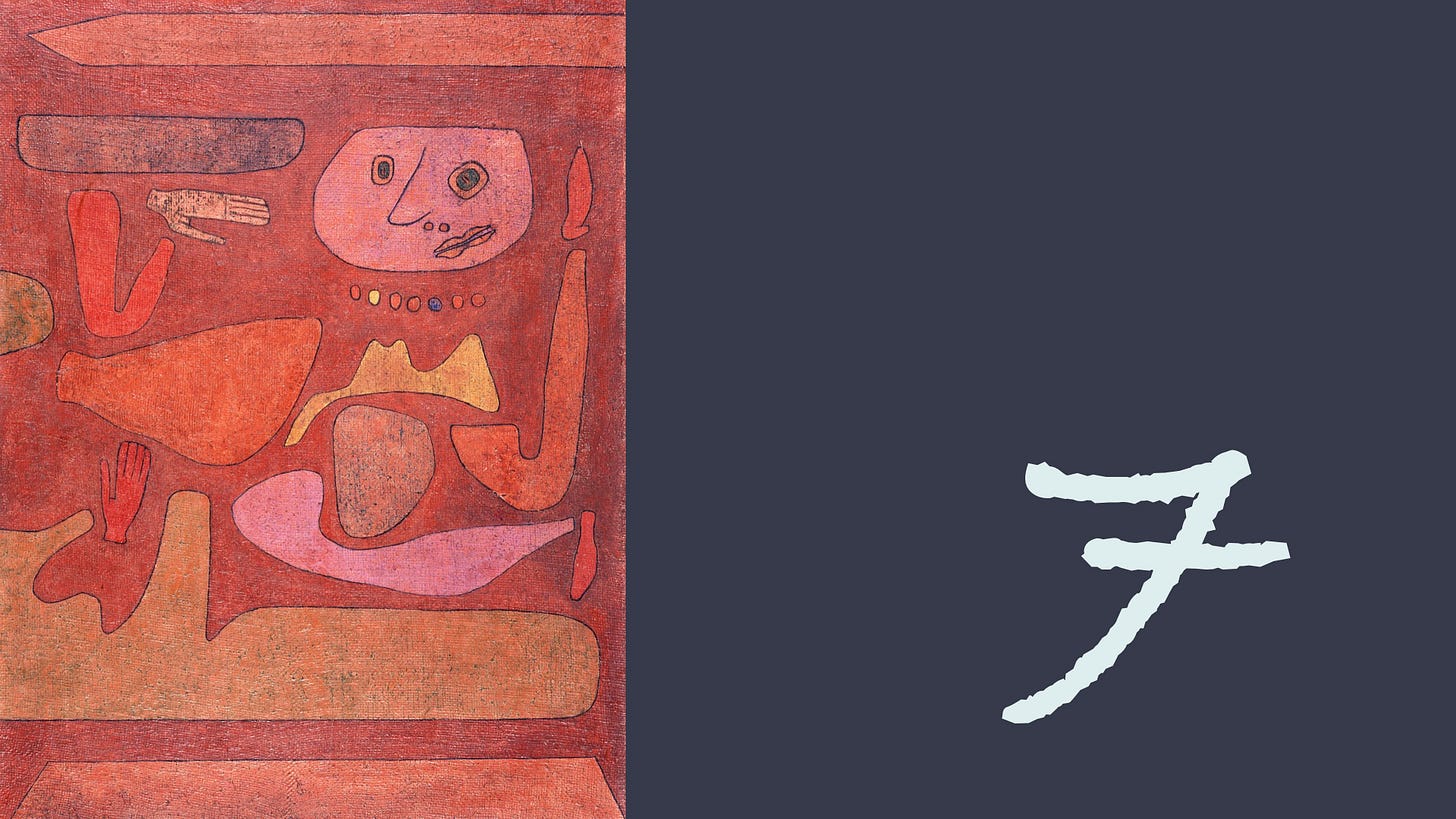A collage can be made of found objects, or a combination of objects and the artist's own drawing. [Writers] perform a similar act ... [with] scattered pieces of language. ~Heath Guide to Literature
Creativity Prompt #7: Just Three Scraps | 30-Day Creativity Challenge
The Man of Confusion by Paul Klee
Once you start using literary constraints to crack open your writing, you may find that you begin to see new ideas for constraints all around you. You may also begin finding your own inventive ways to impose creative limits as a means to deepen and expand your writing practice. If so, you will be joining the ranks of some of the most creative minds in history. Just check out one of the world’s renowned creative groups—the French Oulipo—here and here and here if you want to know more about creativity and constraints.
I myself tend to keep track of contemporary writers known to use constraints so that I can test out their methods in my own work. The poet and memoirist Nick Flynn is one of those writers. He spoke about his strategies—and gave us a few examples to try—at the Tin House Winter Workshop in 2016. And back in 2005, Flynn described his creative process in some depth in an interview with the University of Arizona Poetry Center:
Well, when I’m walking in a strange city I have this ritual, which is to find three bits of ephemera, usually scraps of paper, usually something torn from advertisements, or maybe a ticket stub, or discarded cigarette pack, trash really, but it has to have some element in it that catches my eye, that interests me, or reminds me of something. I like pages torn from children’s notebooks a lot, with drawings on them, though they don’t always mix well with other images. Once I find one it might determine what comes next, one that somehow either adds to the one I already have or else works against it, creating some tension or juxtaposition, though if it feels too limiting, I’ll throw it away and start over. Eventually, over the course of a day, I’ll settle on the three scraps of paper, and then I’ll force myself to make a collage. I make a collage a day, always from only three scraps, because anything more becomes chaos, and I try to only use things I found that day, and to date the final collage, also finding the “canvas,” usually a weathered piece of cardboard, a technique I learned from Bill Traylor. So I have to carry a glue stick, or buy it in a stationary store once I land, which is even better, because I like stationary stores, especially in other countries. I write the same way.
Some creative strategies that I find most useful and compelling in Nick’s description:
A focus on interest and/or memory
Random combinations
Looking for synergy
Looking for contradiction/tension
Using juxtaposition
Imposing limitations
A willingness to start over
The need to “force” oneself to do a task (i.e., acknowledging that we don’t always want to do the things we want to do)
Most of these strategies (with the exception of the last) are directly related to the concept of collage-making:
"Collage is a term derived from art and refers to a picture made up of pieces of found objects: scraps of newspaper, bits of old cane backing, a gum wrapper, lengths of string, tin cans. A collage can be made entirely of found objects, or it can be a combination of the objects and the artist's own drawing. [Writers] perform a similar act. But instead of gathering scraps of newspaper and string, they arrange scattered pieces of language: clichés, phrases they have heard, or quotations."
(The Heath Guide to Literature. D.C. Heath, 1984)
Richard Nordquist, in his ThoughtCo essay on the collage essays, includes multiple definitions and examples, including the following from E.B. White:
Morning is so closely associated with brisk affairs, music with evening and day's end, that when I hear a three-year-old dance tune crooned upon the early air while shadows still point west and the day is erect in the saddle, I feel faintly decadent, at loose ends, as though I were in the South Seas—a beachcomber waiting for a piece of fruit to fall, or for a brown girl to appear naked from a pool.
* * *
Asterisks? So soon?
* * *
It is a hot-weather sign, the asterisk. The cicada of the typewriter, telling the long steaming noons. Don Marquis was one of the great exponents of the asterisk. The heavy pauses between his paragraphs, could they find a translator, would make a book for the ages.
* * *
Don knew how lonely everybody is. "Always the struggle of the human soul is to break through the barriers of silence and distance into companionship. Friendship, lust, love, art, religion--we rush into them pleading, fighting, clamoring for the touch of spirit laid against our spirit." Why else would you be reading this fragmentary page—you with the book in your lap? You're not out to learn anything, certainly. You just want the healing action of some chance corroboration, the soporific of spirit laid against spirit. Even if you had read only to crab about everything I say, your letter of complaint is a dead give-away: you are unutterably lonely or you wouldn't have taken the trouble to write it. . . .
("Hot Weather." One Man's Meat. Harper & Row, 1944)
Today’s creativity prompt taps into the intersection of literary constraints and the long tradition of the collage essay through a guided, stepwise process designed to help you produce unexpected results on the page. The prompt gives you several options to try—a kind of “choose your own adventure” exercise. I’ll be curious to see where it takes you!



